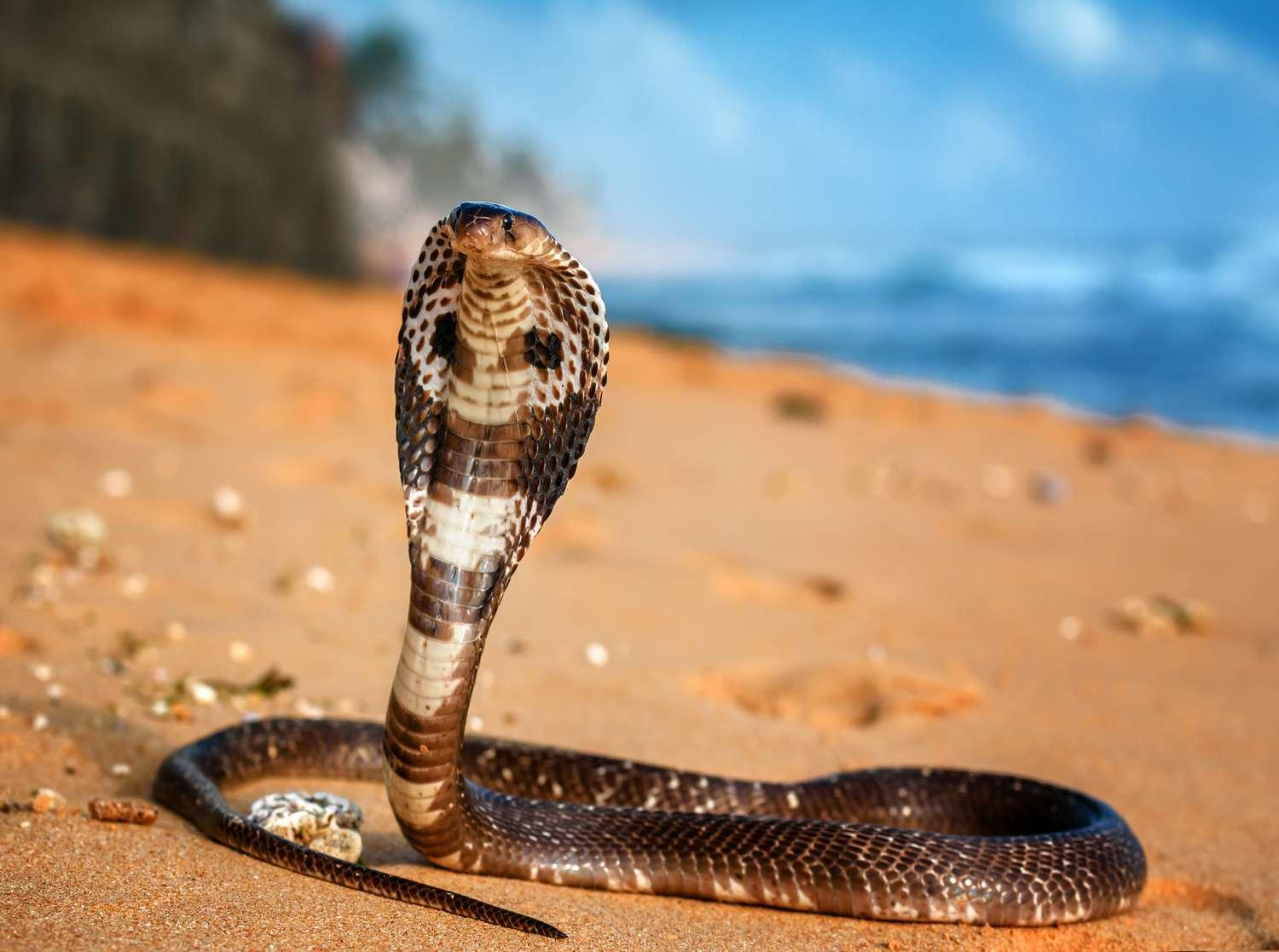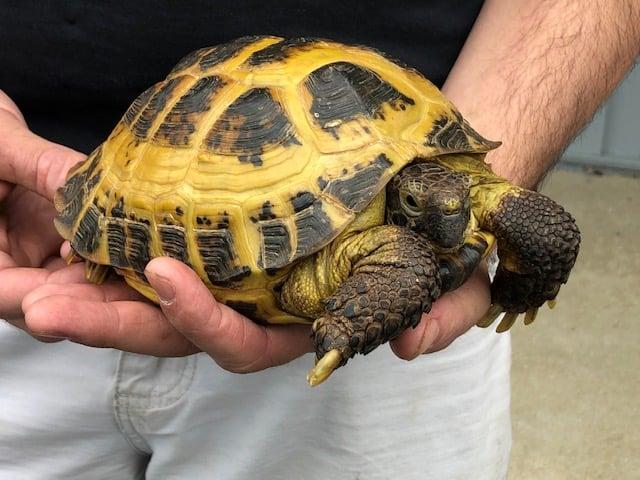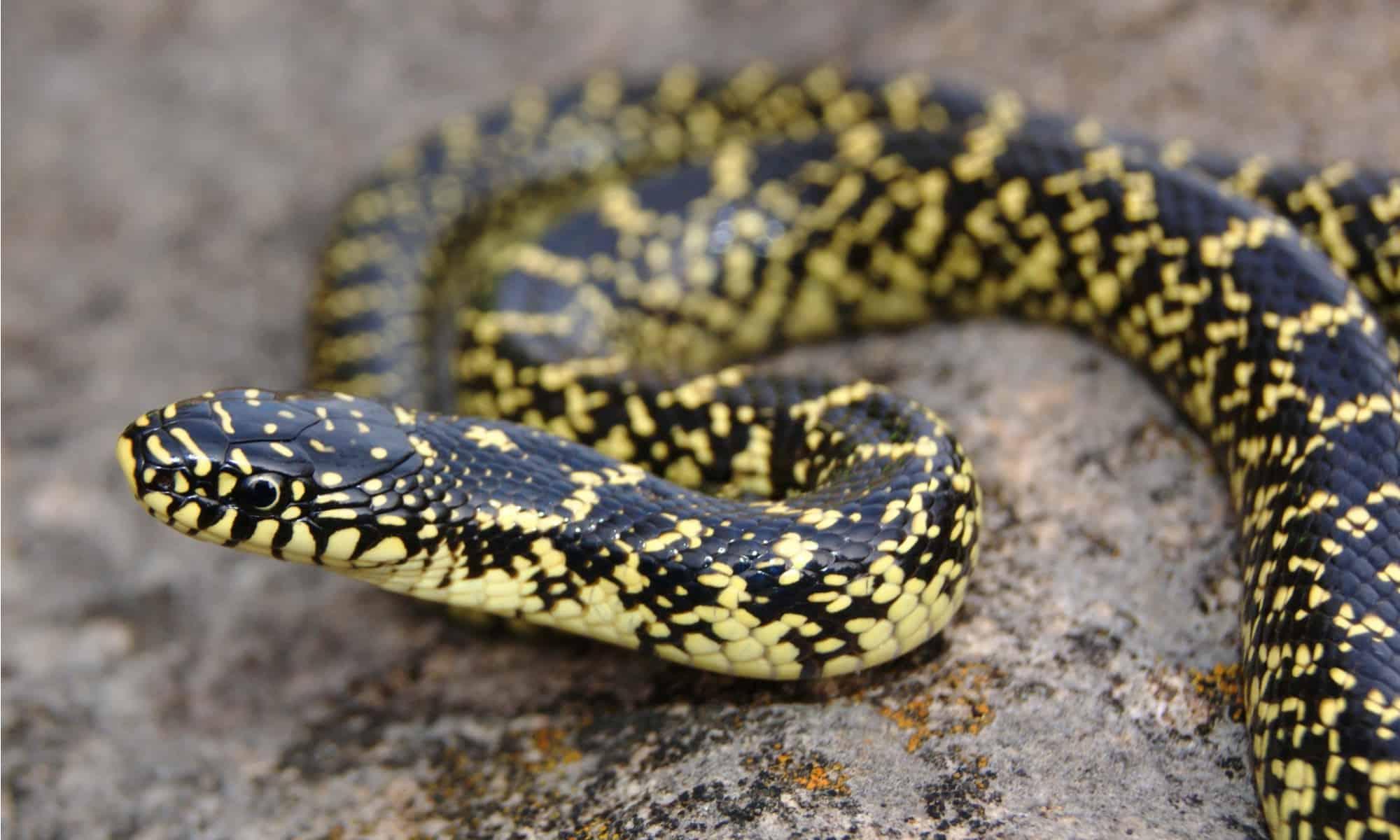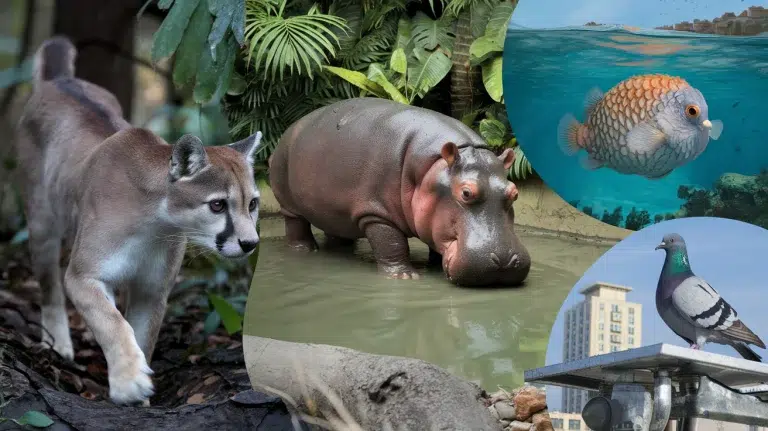34 Fascinating Types of Reptiles from Around the World

Did you know that some reptiles can live for over 100 years? Reptiles are interesting creatures with various species.
From the towering Komodo Dragon to the colorful Chameleon, reptiles come in various shapes, sizes, and habitats, each with characteristics.
Understanding these creatures can increase our appreciation for their role in ecosystems and the natural world.
This guide explores 34 marvelous reptiles, covering their scientific names, origins, appearances, habitats, and lifespans.
Whether you’re curious about reptiles or want to learn more, this list offers a look into reptiles and their adaptations.
Let us get started!
List of Reptiles You Can’t Miss!
1. African Bullfrog

- Scientific Name: Pyxicephalus adspersus
- Origin: Sub-Saharan Africa
- Appearance: Large, stocky frog with a broad body, prominent eyes, and a color ranging from green to brown. Males are significantly larger than females.
- Habitat: Prefers savannas, grasslands, and open woodlands with seasonal water bodies.
- Lifespan: Up to 45 years in captivity.
2. Aldabra Giant Tortoise

- Scientific Name: Aldabrachelys gigantea
- Origin: Aldabra Atoll in the Seychelles
- Appearance: Massive tortoise with a domed shell that varies in color from grey to brown. Males are larger than females.
- Habitat: Tropical dry and humid forests, grasslands, and coastal scrublands.
- Lifespan: Up to 100 years in captivity.
3. American Alligator

- Scientific Name: Alligator mississippiensis
- Origin: Southeastern United States
- Appearance: Large reptile with a broad, U-shaped snout, dark green to blackish skin, and powerful jaws.
- Habitat: Swamps, marshes, rivers, and lakes.
- Lifespan: 35-50 years in the wild, up to 65 years in captivity.
4. Bearded Dragon

- Scientific Name: Pogona vitticeps
- Origin: Central Australia
- Appearance: Medium-sized lizard with a spiny throat “beard,” rough scales, and a color that ranges from brown to orange.
- Habitat: Arid and semi-arid environments, including deserts and dry woodlands.
- Lifespan: 10-15 years in captivity.
5. Black Mamba

- Scientific Name: Dendroaspis polylepis
- Origin: Sub-Saharan Africa
- Appearance: Slender, fast-moving snake with a black mouth lining and olive or greyish-brown skin.
- Habitat: Savannas, woodlands, and rocky hills.
- Lifespan: 11 years in the wild, up to 20 years in captivity.
6. Blanding’s Turtle

- Scientific Name: Emydoidea blandingii
- Origin: North America, primarily in the United States and Canada.
- Appearance: Medium-sized turtle with a high-domed shell, bright yellow chin and throat, and a black or dark brown carapace.
- Habitat: Freshwater lakes, marshes, and slow-moving rivers.
- Lifespan: Up to 70 years in captivity.
7. Boa Constrictor

- Scientific Name: Boa constrictor
- Origin: Central and South America
- Appearance: Large, robust snake with a distinctive pattern of reddish-brown, black, and cream.
- Habitat: Rainforests, savannas, and arid scrublands.
- Lifespan: 20-30 years in captivity.
8. Box Turtle

- Scientific Name: Terrapene carolina
- Origin: Eastern and Central United States
- Appearance: Small to medium-sized turtle with a domed shell and a hinged plastron, allowing it to enclose its body fully.
- Habitat: Woodlands, grasslands, and wet meadows.
- Lifespan: 50 years or more in captivity.
9. Chameleon

- Scientific Name: Chamaeleonidae (family)
- Origin: Native to Africa, Madagascar, and parts of Asia.
- Appearance: Distinctive for their ability to change color, with a prehensile tail and long, sticky tongue.
- Habitat: Rainforests, deserts, and shrublands.
- Lifespan: 2-10 years, depending on the species.
10. Chinese Water Dragon

- Scientific Name: Physignathus cocincinus
- Origin: Southeastern China, Taiwan, and northern Vietnam
- Appearance: Green to brown lizard with a spiny crest running down its back and a long tail.
- Habitat: Subtropical forests and near water sources.
- Lifespan: 15-20 years in captivity.
11. Common Iguana

- Scientific Name: Iguana iguana
- Origin: Central and South America
- Appearance: Large lizard with a green to grey body, spiny crest along the back, and a long tail.
- Habitat: Rainforests, coastal areas, and tropical woodlands.
- Lifespan: 20-25 years in captivity.
12. Crocodile Monitor

- Scientific Name: Varanus salvadorii
- Origin: Papua New Guinea
- Appearance: Large lizard with a long, slender body, distinct black and yellow pattern, and a prehensile tail.
- Habitat: Rainforests and woodlands.
- Lifespan: 20-30 years in captivity.
13. Desert Tortoise

- Scientific Name: Gopherus agassizii
- Origin: Southwestern United States and northern Mexico
- Appearance: Medium-sized tortoise with a domed shell, usually brown or tan, and sturdy legs adapted for burrowing.
- Habitat: Arid desert regions and grasslands.
- Lifespan: 50-80 years in captivity.
14. Eastern Diamondback Rattlesnake

- Scientific Name: Crotalus adamanteus
- Origin: Southeastern United States
- Appearance: Large venomous snake with a distinctive diamond pattern on its back and a rattle at the tail.
- Habitat: Pine forests, hardwood swamps, and upland areas.
- Lifespan: 10-20 years in captivity.
15. Emperor Scorpion

- Scientific Name: Pandinus imperator
- Origin: West Africa
- Appearance: Large scorpion with a dark, shiny exoskeleton and impressive pincers.
- Habitat: Rainforests and savannas.
- Lifespan: 8-10 years in captivity.
16. Gila Monster

- Scientific Name: Heloderma suspectum
- Origin: Southwestern United States and northwestern Mexico
- Appearance: Large, venomous lizard with bright orange and black beaded skin.
- Habitat: Arid desert regions and rocky hills.
- Lifespan: 20-30 years in captivity.
17. Green Anaconda

- Scientific Name: Eunectes murinus
- Origin: South America
- Appearance: One of the largest snakes in the world, with a greenish body marked with black oval spots.
- Habitat: Swamps, marshes, and slow-moving rivers.
- Lifespan: 10-15 years in captivity.
18. Green Iguana

- Scientific Name: Iguana iguana
- Origin: Central and South America
- Appearance: Large green lizard with a long tail and spiny crest along its back.
- Habitat: Tropical rainforests and semi-arid areas.
- Lifespan: 20-25 years in captivity.
19. Horned Lizard

- Scientific Name: Phrynosoma
- Origin: North America, particularly the southwestern United States and northern Mexico
- Appearance: Small, flattened lizard with distinctive horn-like structures on its head and a spiky body.
- Habitat: Arid and semi-arid regions, including deserts and scrublands.
- Lifespan: 5-10 years in captivity.
20. Komodo Dragon

- Scientific Name: Varanus komodoensis
- Origin: Indonesia, particularly the Komodo Islands
- Appearance: The largest lizard in the world, with a rugged, scaled body and a long, powerful tail.
- Habitat: Dry, open grasslands and savanna forests.
- Lifespan: 20-30 years in captivity.
21. Leopard Gecko

- Scientific Name: Eublepharis macularius
- Origin: Afghanistan, Pakistan, and India
- Appearance: Small, ground-dwelling lizard with a spotted pattern and a prehensile tail.
- Habitat: Arid, rocky environments and grasslands.
- Lifespan: 15-20 years in captivity.
22. King Cobra

- Scientific Name: Ophiophagus hannah
- Origin: Southeast Asia
- Appearance: The world’s longest venomous snake, with a distinctive hood and a color ranging from olive to brown.
- Habitat: Dense forests and woodlands.
- Lifespan: 15-20 years in captivity.
23. Yellow Anaconda

- Scientific Name: Eunectes notaeus
- Origin: South America, particularly in the wetlands of Brazil and Paraguay
- Appearance: Large, greenish-yellow snake with dark spots and a thick, muscular body.
- Habitat: Swamps, marshes, and slow-moving rivers.
- Lifespan: 10-15 years in captivity.
24. Leatherback Sea Turtle

- Scientific Name: Dermochelys coriacea
- Origin: Tropical and subtropical oceans worldwide
- Appearance: The largest sea turtle, with a unique leathery shell rather than a hard carapace and a dark brown to black color.
- Habitat: Open ocean and coastal areas.
- Lifespan: 30-50 years or more in the wild.
25. Mediterranean Tortoise

- Scientific Name: Testudo hermanni
- Origin: Mediterranean region, including southern Europe and parts of North Africa
- Appearance: Medium-sized tortoise with a high-domed shell and a color pattern of brown and yellow.
- Habitat: Dry, rocky hills and grasslands.
- Lifespan: 50-70 years in captivity.
26. Mojave Rattlesnake

- Scientific Name: Crotalus scutulatus
- Origin: Southwestern United States and northwestern Mexico
- Appearance: Medium-sized rattlesnake with a distinctive pattern of light and dark bands, often with a greenish tint.
- Habitat: Desert and semi-arid environments.
- Lifespan: 10-20 years in captivity.
27. Nile Crocodile

- Scientific Name: Crocodylus niloticus
- Origin: Sub-Saharan Africa
- Appearance: Large, robust crocodile with a V-shaped snout and a dark, olive-green to brown color.
- Habitat: Rivers, lakes, and marshlands.
- Lifespan: 50-60 years in captivity.
28. Panther Chameleon

- Scientific Name: Furcifer pardalis
- Origin: Madagascar
- Appearance: Vibrantly colored chameleon with a range of patterns and colors, including red, blue, green, and orange.
- Habitat: Rainforests and tropical forests.
- Lifespan: 5-7 years in captivity.
29. Reticulated Python

- Scientific Name: Python reticulatus
- Origin: Southeast Asia
- Appearance: One of the longest snakes in the world, with a distinctive pattern of net-like scales and a variety of colors.
- Habitat: Tropical forests, grasslands, and swamps.
- Lifespan: 15-25 years in captivity.
30. Russian Tortoise

- Scientific Name: Testudo horsfieldii
- Origin: Central Asia, including Russia and northern China
- Appearance: Small tortoise with a low-domed shell and a color pattern of yellow and brown.
- Habitat: Arid deserts and semi-desert areas.
- Lifespan: 40-50 years in captivity.
31. Sand Boa

- Scientific Name: Gongylophis colubrinus
- Origin: North Africa and the Middle East
- Appearance: Small, stout snake with a smooth, sand-colored body and a blunt head.
- Habitat: Arid and semi-arid desert environments.
- Lifespan: 15-20 years in captivity.
32. Southern Alligator Lizard

- Scientific Name: Elgaria multicarinata
- Origin: Southwestern United States and northern Mexico
- Appearance: Medium-sized lizard with a robust body, keeled scales, and a color pattern of brown or gray with darker bands.
- Habitat: Grasslands, forests, and rocky hillsides.
- Lifespan: 10-15 years in captivity.
33. Speckled Kingsnake

- Scientific Name: Lampropeltis holbrooki
- Origin: Central United States
- Appearance: Medium-sized snake with a distinctive black and yellow or white speckles pattern.
- Habitat: Forests, grasslands, and agricultural areas.
- Lifespan: 15-20 years in captivity.
34. Sulcata Tortoise

- Scientific Name: Centrochelys sulcata
- Origin: Africa, particularly the Sahara Desert region
- Appearance: Large tortoise with a distinctive, domed shell and a yellowish-brown color.
- Habitat: Arid and semi-arid regions, including savannas and grasslands.
- Lifespan: 50-70 years in captivity.
Conclusion
From Nile Crocodile to Horned Lizard, each species has their characteristics and adaptations.
Understanding their scientific names, appearances, and habitats helps us appreciate their diversity and importance in the natural world.
Here’s a fun fact: Many reptiles have existed for millions of years and have changed little over time, showcasing their incredible adaptability and survival skills.
By exploring these 34 reptiles, we greatly appreciate their role in our ecosystems and the need to protect their habitats.
We hope this list inspires you to learn more about reptiles and other creatures essential for sustaining life on this planet.
Happy learning!






